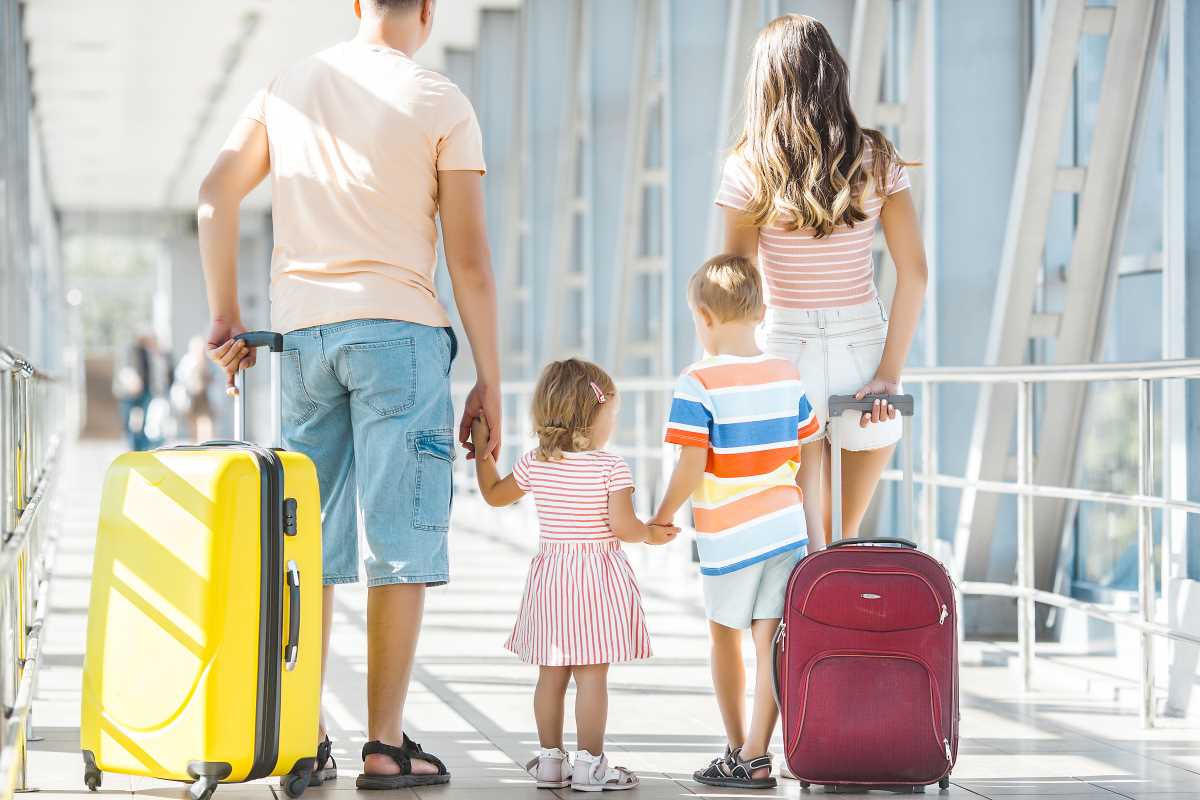Traveling with kids opens up a new world, but also a new set of challenges. Before kids, you could book a flight on a whim and throw a few things into a carry-on. With little ones in the mix, though, every trip requires more planning and patience. One of the biggest questions parents ask is, “When is it safe to start traveling with kids?”
The short answer? It depends. Your child’s age, health, and the type of trip you’re taking all play a role. While there’s no universal rule, understanding what to expect at different stages can help you make informed decisions. Whether you're dreaming of a road trip, a beach getaway, or a big overseas adventure, this guide will give you practical advice and tips for traveling with kids safely and confidently.
Traveling with Newborns (0–3 Months)
The first three months of your baby’s life can be a tricky time for travel, especially long or complicated trips.
Why it’s challenging:
- Health Risks: Newborns have underdeveloped immune systems, making them more susceptible to germs and illnesses, especially in crowded places like airports or planes.
- Frequent Needs: Infants eat and need diaper changes constantly, often on unpredictable schedules.
- Parental Exhaustion: Sleep deprivation is real, and adding travel can make things even harder during this phase.
When it makes sense: If travel is absolutely necessary—for example, to visit family or due to a special occasion—keep the trip short and low-stress. Consider driving instead of flying to reduce exposure to germs and maintain more control.
Traveling with Infants (3–12 Months)
Once babies reach their 3-month mark and have a more predictable routine, travel becomes more manageable. This phase can be a surprisingly great time for parents to dip their toes into family trips.
Pros:
- Stable Routine: Many babies nap at regular times, making it easier to coordinate itineraries.
- Limited Mobility: Most infants aren’t crawling or walking yet, so they’re easier to manage in transit.
- Portable: Babies this age are lightweight and often enjoy the soothing motion of a car ride or stroller.
Challenges:
- Flight Pressure Issues: Takeoffs and landings can cause ear discomfort for infants. Feeding or using a pacifier during these times can help.
- Packing Gear: Diapers, bottles, and baby carriers take up space. Be prepared for a hefty diaper bag.
Best trip types during this phase include resort stays, weekend getaways, or visiting family. Keep itineraries simple to focus on rest and bonding.
Traveling with Toddlers (1–3 Years)
Toddlers are the definition of curious explorers, which makes travel exciting—but also unpredictable!
Pros:
- Engaged and Interactive: Toddlers start to understand and enjoy new experiences, making family trips more fun.
- Solid Immune Systems: By this age, most kids have had several rounds of vaccinations and are less vulnerable to common illnesses.
- Easier Feeding: You can offer regular meals and snacks rather than relying only on bottles or breastfeeding.
Cons:
- Short Attention Spans: Long flights or road trips can test a toddler’s patience. You’ll need snacks, activities, and a solid entertainment plan.
- Meltdowns: Missed naps, unfamiliar environments, or overstimulation can lead to cranky moments.
- Supervision: Staying active means toddlers love to explore (and sometimes escape!), so keep safety top of mind.
Great options at this stage include all-inclusive resorts, cruises, or family-friendly destinations with play areas and short travel times. Nature-inspired trips, like the beach or parks with space to run, are a hit.
Traveling with Preschoolers (3–5 Years)
By the time your kids become preschoolers, travel becomes significantly easier. Their curiosity and growing independence bring an exciting new dynamic to family trips.
Why it’s great:
- Better Communication: Preschoolers can share their likes, dislikes, and needs, making planning easier.
- Routine Matters Less: They’ve dropped most naps, so your schedule can include more activities.
- Enthusiasm for Exploration: Whether it’s a zoo, museum, or beach, this age group loves new experiences.
Best trips: Theme parks, national park adventures, and weekend city trips work well. They can handle travel days better with engaging stops along the way. Don’t forget to pack entertainment to keep long flights and car rides smooth!
Traveling with School-Age Kids (5–12 Years)
School-age kids are the golden age of family travel. They’re independent, adaptable, and excited to learn. This phase allows for more flexibility and bigger adventures!
Why it’s a breeze:
- Eager for Experiences: Kids this age truly appreciate cultural sights, stories, and new foods.
- Helpful Travelers: They can pack their own toys, snacks, and maybe even handle their carry-on bag.
- Longer Attention Spans: Finally, you can enjoy longer hikes, guided tours, or museum visits without constant distractions.
Travel Tips for School-Age Kids:
- Plan activities that stimulate their interests, like interactive exhibits or family-friendly walking tours.
- Use travel opportunities for learning, whether it’s history, geography, or trying a new language.
Popular destinations for this age include international trips, historical landmarks, or coastal towns where they can swim or surf. Cruises are also a great way to balance parent relaxation and kid activities.
Tips for Travel at Any Age
No matter how old your kids are, these universal travel tips can make your adventures smoother and more enjoyable:
- Pack Strategically: Focus on essentials and avoid overpacking.
- Choose Accommodations Carefully: Look for family-friendly hotels or vacation rentals with kid amenities, such as cribs, play areas, or pools.
- Plan Downtime: Build rest or play breaks into your schedule to help everyone recharge.
- Stay Flexible: Expect hiccups like tired kids or unexpected delays. Go with the flow when things don’t go as planned.







